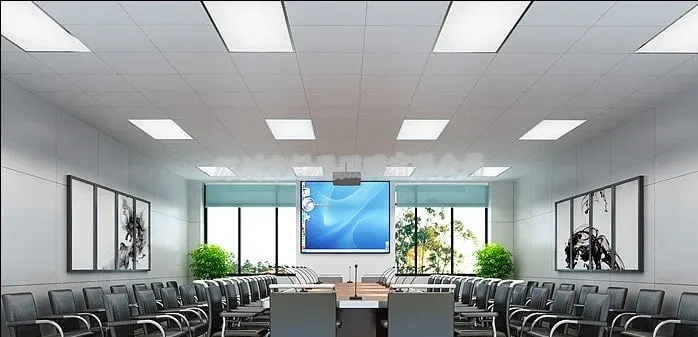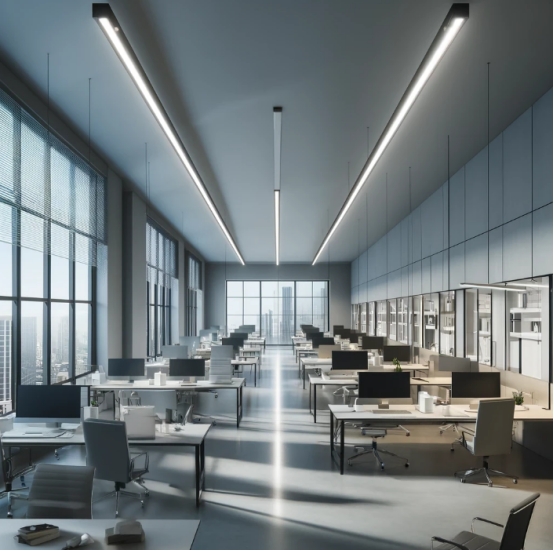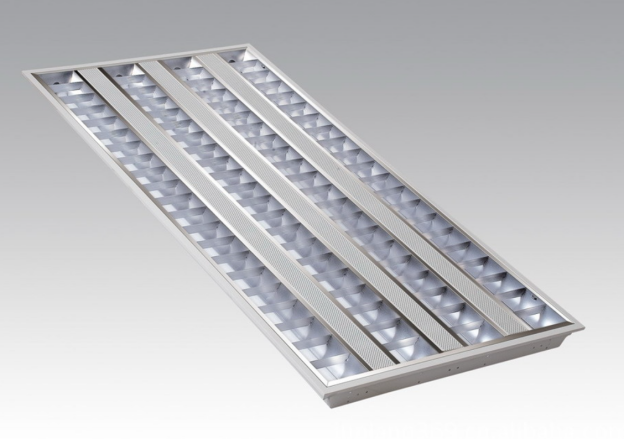The industrial illumination landscape has undergone a revolution with the introduction of LED lighting technology, which provides warehouse and factory owners with previously unheard-of advantages.
The performance of your facility can be greatly improved by switching to LED lighting, which will also provide significant long-term value.
Maintaining a profitable firm in today’s fiercely competitive industrial market requires optimizing operational efficiency.
Lighting is crucial to warehouse and manufacturing operations, as it impacts energy expenses, worker productivity, and general safety.
Energy Efficiency of LED Lighting
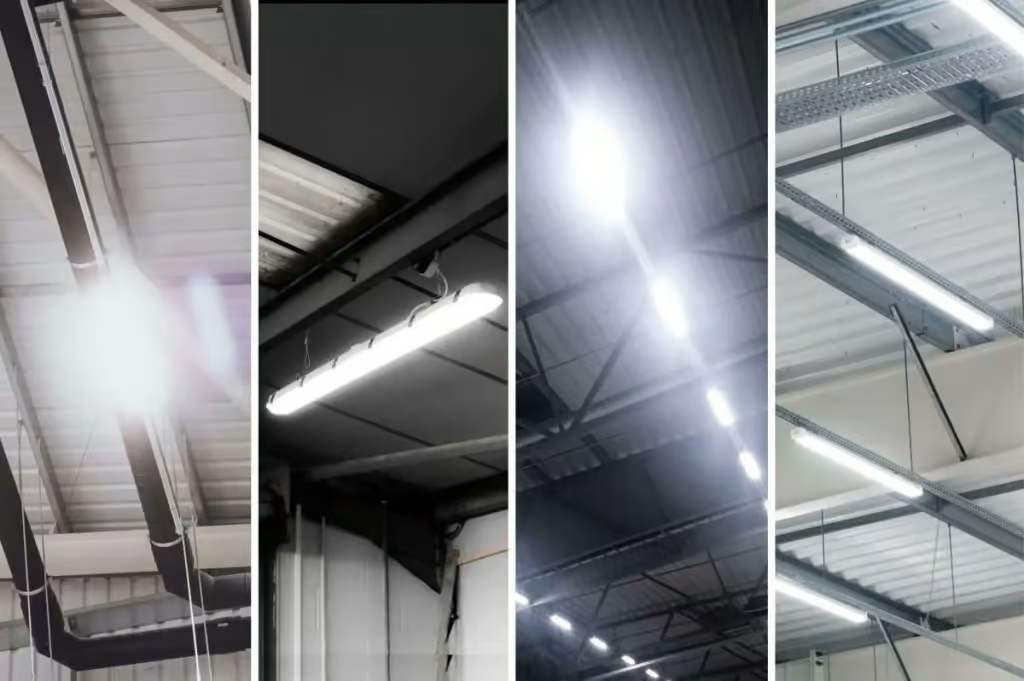
One of the many benefits of LED lighting is its energy efficiency. Some of them include:
Reduced Energy Consumption
LED lighting has advanced significantly in terms of energy efficiency, surpassing more conventional lighting options such as fluorescent and high-intensity discharge (HID) fixtures.
Energy consumption can be reduced by up to 60% with modern LED industrial lighting, like the OLAMLED Linear High Bay series, when compared to traditional solutions.
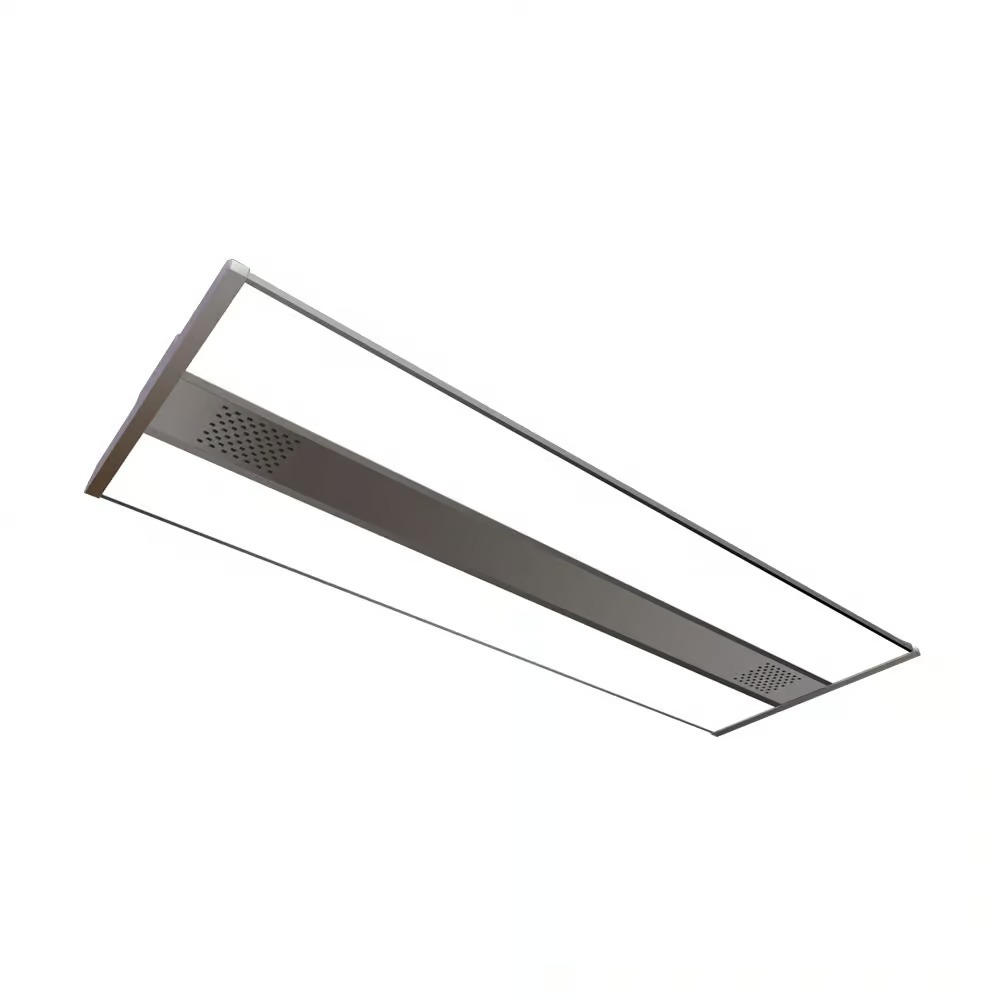
Because LED technology has a greater lumens per watt (lm/W) ratio, fewer fixtures are needed to maintain acceptable brightness levels, resulting in high-efficiency performance.
The U.S. Department of Energy states that traditional high bay lights usually run between 50 and 100 lm/W, but LED high bay lighting has average efficiency of 100 to 150 lm/W.
Your warehouse or factory will save a lot of money on electricity costs each month because to this notable increase in energy efficiency, which makes LED lighting a wise investment.
Lower Heat Emission
The fact that LED lighting produces a lot less heat than conventional lighting options is one of its main benefits in industrial environments.
Traditional industrial lights, such high-pressure sodium or metal halide bulbs, produce a lot of waste heat, which can further tax the HVAC systems in your building.
LED lights, on the other hand, typically emit 3.4 BTU per watt, operating at significantly lower temperatures than metal halide lamps, which generate 9.5 BTU per watt, and high-pressure sodium lamps, which emit 12.6 BTU per watt.
In addition to lessening the strain on your cooling systems, this decreased heat emission makes your workplace more comfortable for your staff.
You can save even more energy and money on operating expenses by reducing the need for excessive cooling.
Longer Lifespan and Durability
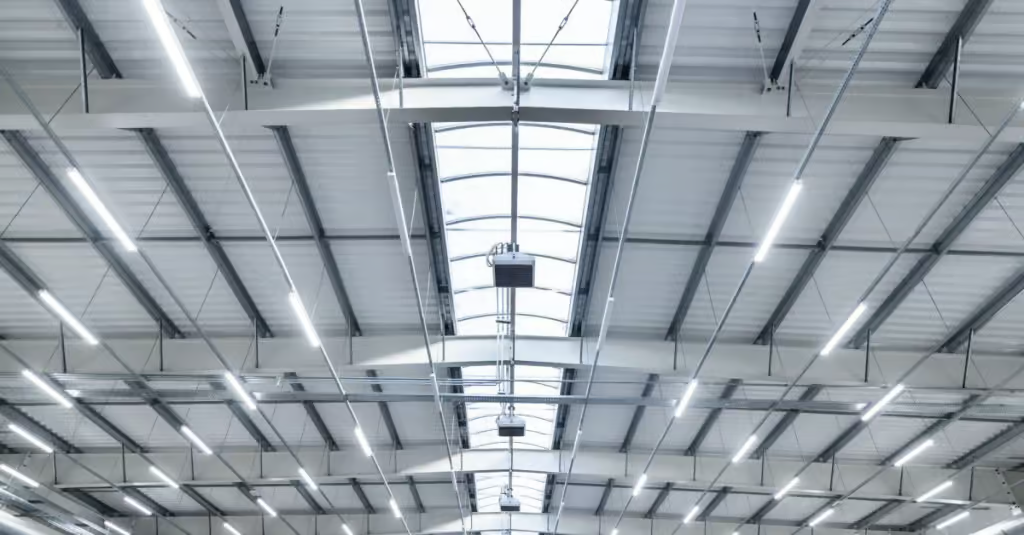
Extended Lifespan
A major benefit of LED lighting in industrial environments is the technology’s remarkable durability. Traditional lighting solutions usually have a lifespan of about 10,000 to 20,000 hours.
LED lights can endure up to 50,000 hours or more of continuous operation. Because of its longer lifespan, your facility will have more uniform illumination, require less maintenance, and require fewer replacement bulbs.
Durability in Industrial Environments
Lighting systems face particular difficulties in industrial settings due to factors including high temperatures, dust, debris, mechanical vibrations, and fluctuating humidity levels.
LED lighting fixtures are made especially to endure these harsh circumstances, guaranteeing reliable illumination and performance even in the most severe industrial environments.
Regarding their ability to withstand stress and vibration, LED high bay fixtures outperformed conventional high bay lights.
Its longevity will result in fewer operating interruptions and less maintenance for your facility.
Reduced Maintenance Costs
When compared to conventional lights, LED lighting have a lower average yearly maintenance cost per fixture. This decrease in maintenance costs might have a big effect on your facility’s profitability if you decide to take advantage of it.
The long lifespan and strong resilience of LED lighting combine to drastically lower the maintenance costs of the lighting system in your building.
You should anticipate significant labor and material savings throughout the course of your LED lighting installation.
This includes fewer bulb replacements, fewer service visits, and a decreased need to hire equipment (such as lifts for high-ceiling access).
Enhanced Visibility and Safety
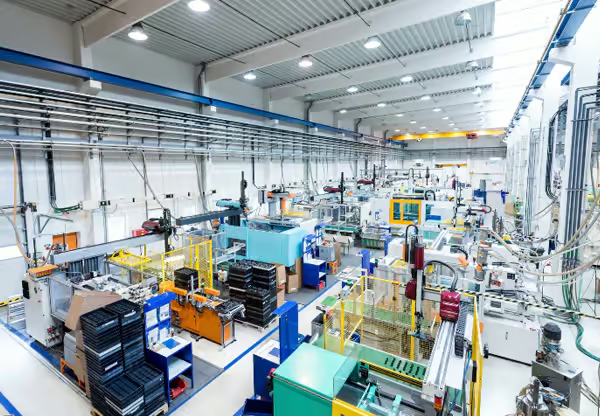
The safety of your employees is paramount. Using LED lighting can help enhance visibility and safety. This includes:
Improved Lighting Quality
Proper lighting is crucial to your warhouse. Excellent illumination quality is provided by LED lighting technology, which evenly distributes brilliant light across your factory or warehouse.
Modern LED lighting’ high color rendering index (CRI) guarantees precise color representation, improving detail visibility and lessening eye strain for your staff.
Conventional high bay lights typically have a CRI of 60 to 70, whereas LED high bay lighting can reach 80 or more.
Your employees will be able to operate more accurately and efficiently thanks to the reduced shadows and dark areas caused by the better illumination.
Increased Safety
Falls and other dangerous situations can be caused by dark areas and malfunctioning lighting in your warehouse or factory.
Using specialist access equipment and having a plan to promptly fix any flaws help to guarantee a safe working environment.
If you are looking to improve workplace safety in your industrial site, LED lighting offers increased visibility.
This improved lighting lowers the chance of accidents and injuries by making it easier for employees to spot possible dangers.
Research has indicated that increasing lighting levels can significantly reduce workplace occurrences.
For example, in the metal industry, increasing from 300 lux to 2,000 lux reduced incidents by fifty two percent, while increasing from 500 lux to 1,600-2,500 lux reduced incidents for difficult visual tasks by fifty percent.
Instant-On Capabilities
The capacity to respond swiftly to changing lighting requirements is especially important in dynamic industrial contexts.
The instant-on function of LED technology allows for a more agile and responsive lighting system than traditional alternatives, which can be critical for ensuring safety and efficiency in fast-paced factory or warehouse environments.
Unlike traditional industrial lighting, which takes a warm-up period, LED fixtures give instant on capability. This function eliminates wait times, meets emergency lighting requirements, and enables for fast illumination modifications based on operational needs.
Environmentally Friendly Option
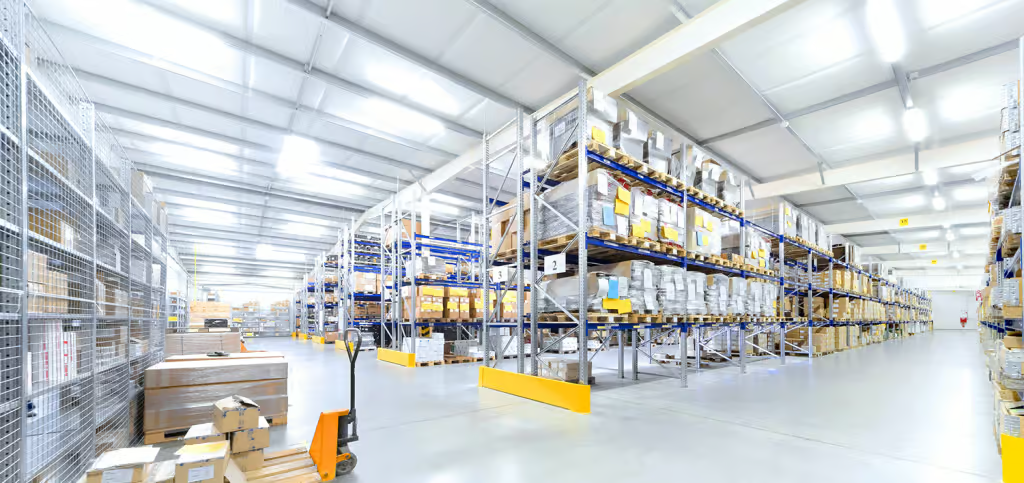
When choosing the right lighting for your warehouse or factory, it is important to consider options that are environment-friendly. LED lighting has several advantages on this:
Energy Savings and Reduced Carbon Footprint
The widespread use of LED lighting technology has immense potential to drive energy savings in the United States. By 2035, LED technology is expected to dominate the lighting industry.
The switch to LEDs could save an incredible 569 terawatt-hours of electricity each year – that’s equivalent to the annual output of 92 large power plants (each producing 1,000 megawatts).
This could result in annual energy savings of 569 TWh – equivalent to the annual output of more than 92 1,000 MW power plants.
By transitioning your facility to LED lighting, you can significantly reduce your carbon footprint through decreased energy consumption.
The high efficiency of LED technology directly translates to lower greenhouse gas emissions from power generation, helping your business meet sustainability goals and environmental regulations.
The U.S. Department of Energy estimates that if all high bay lighting in the U.S. were converted to LED, the annual energy savings would be enough to power 1.8 million homes.
This substantial reduction in energy demand can have a meaningful impact on your facility’s environmental impact, supporting your corporate social responsibility initiatives.
No Hazardous Materials
Keeping your employees safe is another aspect of managing a plant or warehouse.
LED lights are free of potentially dangerous chemicals like mercury, which are frequently found in fluorescent and high-intensity discharge (HID) lamps.
This lowers the chance of environmental contamination and streamlines the disposal procedure, making LED lighting a more ecologically friendly option.
Sustainability in Industrial Lighting
LED lighting’s durability and energy efficiency complement the industrial sector’s increasing focus on sustainable practices.
Your facility can drastically lower its carbon footprint by switching to LED technology, which uses less energy.
As previously stated, the environmental impact of your facility can be significantly reduced by this significant decrease in energy usage, which is equal to powering 1.8 million houses if all high bay lighting in the US were switched to LED.
By showcasing this dedication to environmental stewardship, you may attract eco-aware stakeholders and customers and improve your company’s reputation.
Cost-Effectiveness Over Time
Deciding to buy LED lighting is not an expenditure- it’s an investment. LED lighting purchase is cost-effective over time. Here’s why:
Initial Investment vs. Long-Term Savings
Although switching to LED lighting may cost more upfront than more conventional solutions, the long-term financial advantages make it a wise investment for your business.
For instance, the OLAMLED Linear High Bay series is an affordable option for your factory or warehouse because it provides excellent illumination quality and notable energy savings.
Return on Investment (ROI)
Most industrial facilities can expect to see a complete return on their investment in LED lighting within two to three years. Upgrading to LED technology gives a high return of investments
since the combination of energy savings, reduced maintenance costs, and improved operational efficiency creates a compelling financial case.
According to a study by the U.S. Department of Energy, the average payback period for LED high bay fixtures is 1.5 to 3 years, depending on the specific use case and energy rates.
Customization and Flexibility in Lighting Design
How do you know that LED lights will fit perfectly into your warehouse or factory? Well, it gives you the customization and flexibility to meet your needs.
Adaptable to Different Areas
Since LED lights are so adaptable, you may utilize them in many different areas of your structure. Whether you’re loading trucks, assembling things, or storing items, you may change the light to suit your needs.
This implies that you can guarantee that everyone, wherever they may be working, can see clearly and be productive.
Smart Lighting Systems
You can control your lights using sophisticated LED lighting systems, such as the OLAMLED Smart Lighting System.
It allows you to remotely adjust lighting levels, schedule lighting changes, and automate operations based on occupancy or time of day.
Compatibility with Sensors
To save even more money, you can integrate LED lights with motion sensors, timers, and other smart control devices to lower illumination in areas that aren’t in use.
This sensor-enabled feature will help your lighting system function intelligently and efficiently, supporting your overall sustainability initiatives.
Enhanced Productivity and Employee Comfort

Getting LED lights for your warehouse or factory goes beyond just the aesthetics and the functionality bit. It increases productivity and employee comfort in various ways:
Natural Light Imitation
LED lights can mimic natural sunlight, which is great for your employees’ health. By copying the way the sun looks, these lights can help your workers feel better and be more productive.
Additionally, they can lessen weariness and eye strain, particularly during lengthy workdays.
Impact on Employee Morale
Employees are happier and more productive in workplaces with enough lighting. The right lighting can reduce eye strain, improve mood, and foster creativity.
Think about it- a high quality lighting investment could lead literally to a more conducive work environment.
Choosing the right lighting for your workstation is essential. Your employees’ specific needs and the tasks they perform should be considered.
A few things to think about are the illumination level, the light dispersion, and the color temperature of the light.
Reduced Flicker and Noise
LED lighting fixtures don’t have the typical flickering and buzzing problems that come with conventional industrial lighting systems.
Eliminating visual and aural distractions improves the working environment, which helps your employees focus better and have less headaches and eye strain.
Compliance with Industry Standards
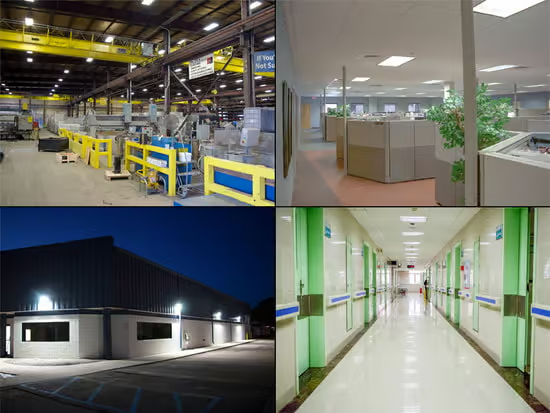
One of the most important things when it comes to running a warehouse or factory is ensuring that everything you do, including installing lights, complies with industry standards.
LED lights already meet this criteria in several ways:
Meeting Safety and Lighting Standards
To ensure adherence to current rules and regulations, modern LED lighting systems are made to meet or beyond all applicable industry safety and performance standards.
You can rely on your facility’s lighting solution to offer ideal illumination while meeting the most recent industry standards by switching to LED technology.
Government Incentives and Rebates
If you’re considering upgrading to LED lighting, you might be surprised to learn that many regional and national governments offer financial incentives.
These rebate programs are designed to encourage the adoption of energy-efficient LED lighting.
Lowering the upfront cost of your LED lighting conversion can speed up the payback period and increase overall return on investment.
Conclusion
Making the switch to LED lighting is a calculated investment in your industrial facility’s future.
LED technology is a revolutionary solution for factories and warehouses because of its many advantages, which range from increased safety and productivity to remarkable energy efficiency and lifespan.
You can promote operational excellence, show your dedication to environmental sustainability, and generate significant long-term value with cutting-edge LED solutions like the OLAMLED Linear High Bay series.
You may set up your industrial facility for future success by utilizing the power of LED lighting.
